Here we are, all the family arrived for a one-month trip in China. In the public transport that takes us to Liuliqiao bus station, Chinese people are puzzled to look at a band of heavy-equipped foreigners traveling in this kind of transport. The bus station is brand new with an huge waiting hall. They sell the tickets at the first floor and the ground floor is worthy of an airport. The passengers comfortably wait in front of the boarding gate.
Towards Datong, in the Shanxi province. A 3-million small Chinese town. When we get off the bus, taxi drivers bustle about. One of them drops us off in front of a hostel and offers us to take off our rucksacks in the room and to rush at the Yungang caves, registered in the World Heritage list, 20km from Datong. We're OK for the trip.
In the distance, we contemplate a short cliff, slightly eroded by cavities. In fact, these orifices are grottoes where each square centimeter was carved in. Tourists can visit about thirty caves which contains the bewildering number of 50000 Buddhas.
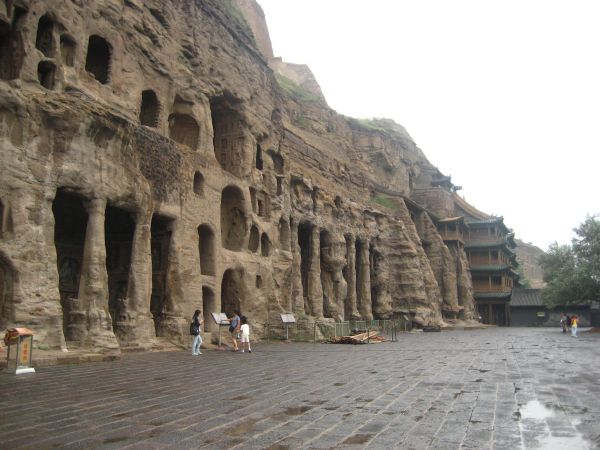
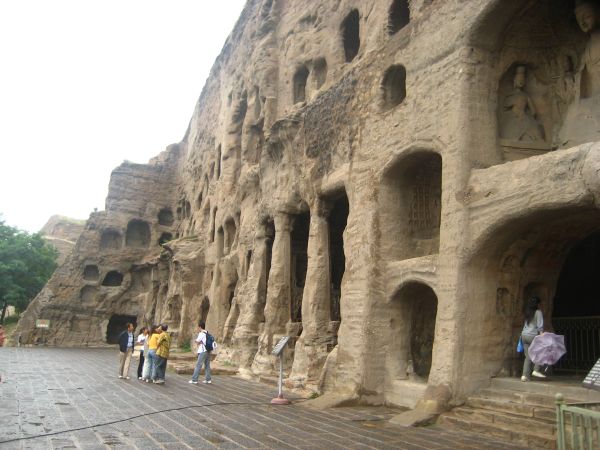
From a few centimeters to several meters, the potbellied character is carved in all its forms. The sculptors' overzealousness dedicated at the generosity of Buddha culminates in the caves n°5 and n°6.
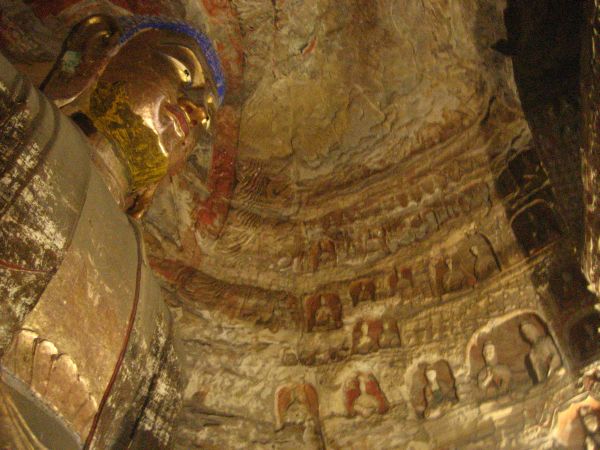
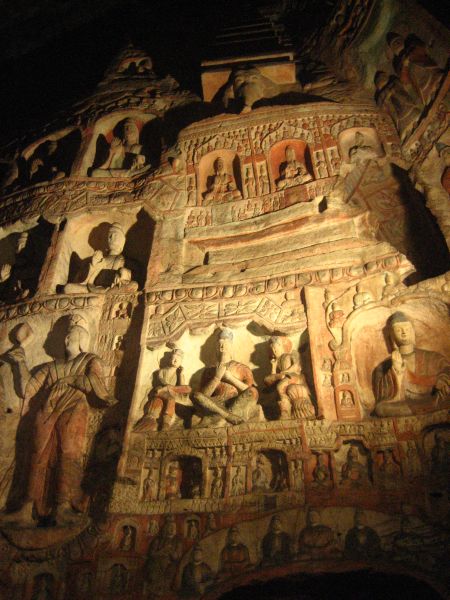

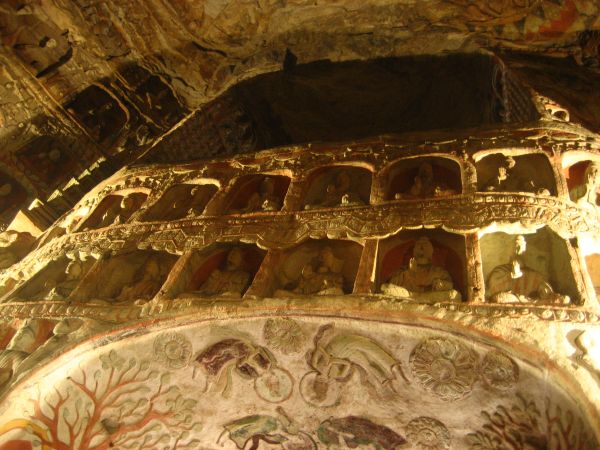
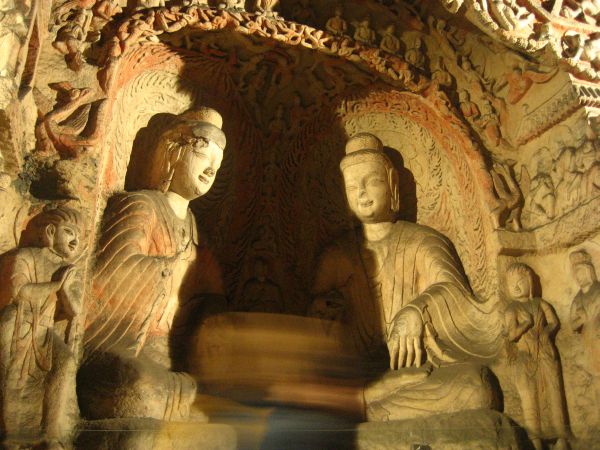
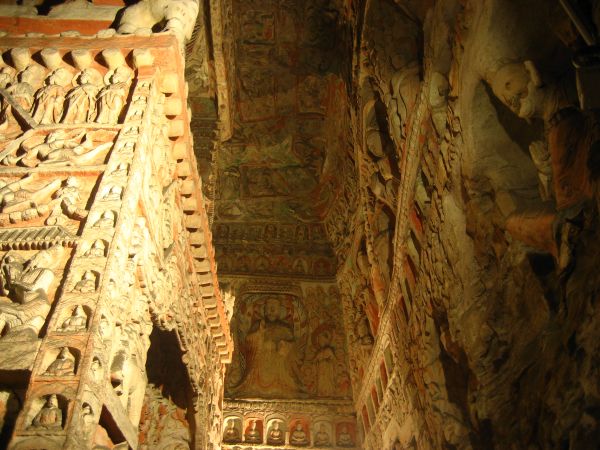
The look clings to the details, to colorful reliefs, smiles in front of the ingenuity used bey the sculptors to fill the spaces. In each cave, a patchwork of icon-like Buddhas carpets all the infractuosities, encircling an altar of stone or a main Buddha, proportionally sized to the cave dimensions.

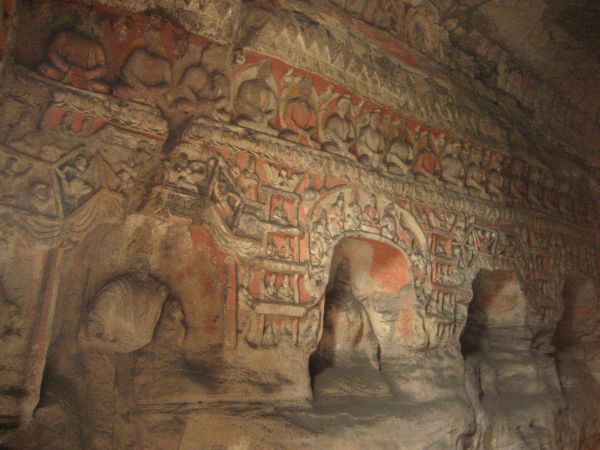

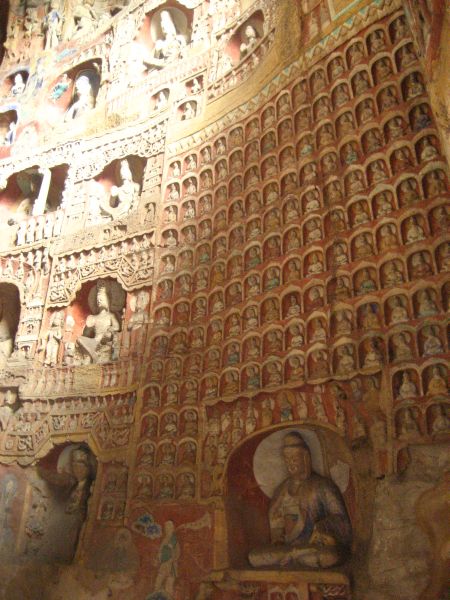
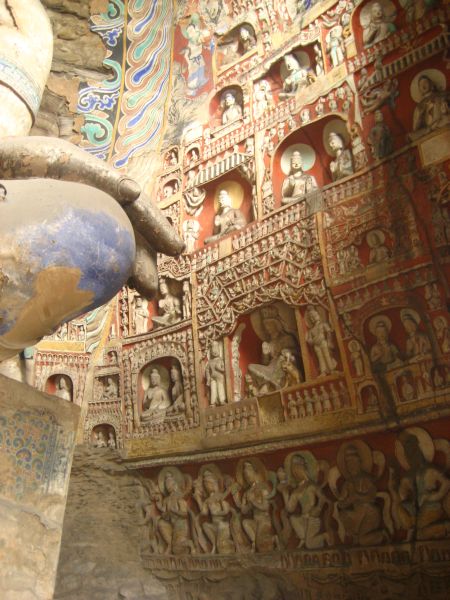

RTW-China
Monday 30 July 2007
The 50000 buddhas of the Yungang caves
By dorian on Monday 30 July 2007, 00:47
Saturday 28 July 2007
Escapade on the Great Wall
By dorian on Saturday 28 July 2007, 00:38
I remember a picture in an old book of History. The Great Wall of China was shown and beguiled me as all these generations who dreamt of it listening to the stories we related. The luckiest saw it and kept alive dream and mistery recalling fragments of their logbook.
Before all, the Great Wall of China is a pharaonic project. The snake of stone runs over 5000km on steep mountains and had to protect China from the mongolian invaders. The History will show it won't be useful.
From Beijing (Chengde for us) there are several ways to get to the Great Wall, Badaling and Mutianyu places are the nearest ones but the busiest as well. The Wall was completely restored and some people don't like the Disneyland side of these spots. We opted for the place of Jinshaling. You can reach the Wall by cable car or on foot.

We step on a small path, crossing corn fields before going uphill. For the insensitive minds of the stony remains, it's only a wall splitting two territories but the geographical complexity gives an impression of life to the Wall. It leaps from a mountain to another one, crawls and vanishes beyond the horizon. Our pace is loud on the snake's backbone, the sensation is thriling and eyes-captivating. The hike alternates climbing stairs and steep ways down. The stops are unending, our eyes are hypnotised by the main line of the Great Wall. They feed on its undulations and attempt to guess its progression while it plunges behind a hill and gushes on the next one. Each watchtower offers an observation post to enjoy what happens forward.
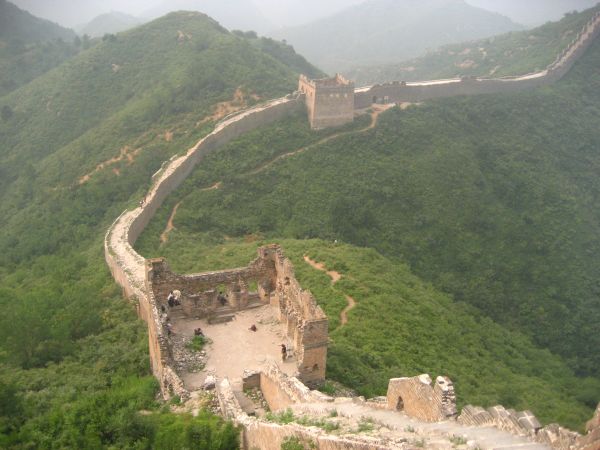




The impressive beauty of the Great Wall of China was rewarded being chosen as one of the new 7 wonders. The other ones are : the Colyseum in Roma, the Taj Mahal in Agra, the Machu Picchu near Cuzco, Chichen Itza in the Yucatan, the nabathean city of Petra, and the Chris-the-Redeemer statue in Rio de Janeiro.
30 watchtowers mark out the up and down ways between Jinshaling and Simatai. This part of the Great Wall allows you to start from a place and to end in the other one, 4 hours later. We avoid a return trip on the Wall (although there's nothing unpleasant for that). A dream day gliding on a capricious nature tamed by the madness of the man. A day groping our way around the empire of the angels.






Friday 27 July 2007
The outer temples of Chengde
By dorian on Friday 27 July 2007, 00:30
From the Dongzhimen bus station, you can reach the northwestern destinations of Beijing. Not easy to find the way between the minibuses, local buses and long-distance buses. Hookers offer a day trip to the China Great Wall ; a young Chinese explains us the Chengde bus leaves in half an hour and we must wait. It's a minibus which stops several times to fill all the seats up, consequently delaying the journey. The 4-hour initial journey get longer to 3 hours. When we arrive in the afternoon, our time is precious since we planned to go back the next day to step on the Great Wall. We choose a hooker that offers a cheap downtown hostel and inside the taxi, we arrange with the driver to take us to the outer temples of Chengde.
The imperial gardens and the outer temples in the suburbs of the city concentrate the tourists. We opt to sacrifice the first place of interest for the second one and rush at the Puning temple. This foothill-built staggering temple takes on white and brick red shades. A few buddhist monks meditate while the tourists feed their curiosity and fill themselves with positive energy walking into the maze of this peace haven. The main temple containt a 42-arm mind-boggling buddha. The statue is imposing and radiant in spite of the cut-off perspective due to the architecture itself of the temple.
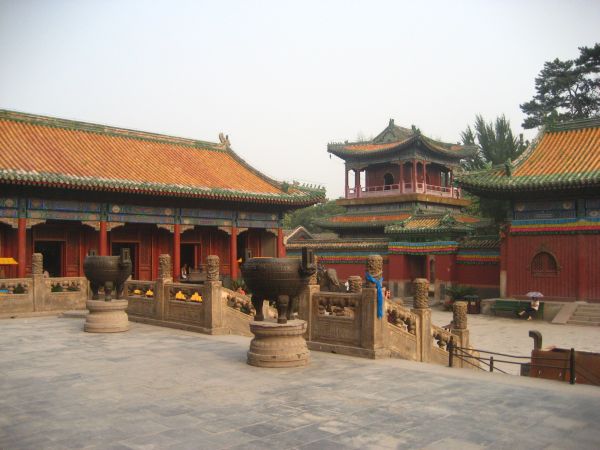
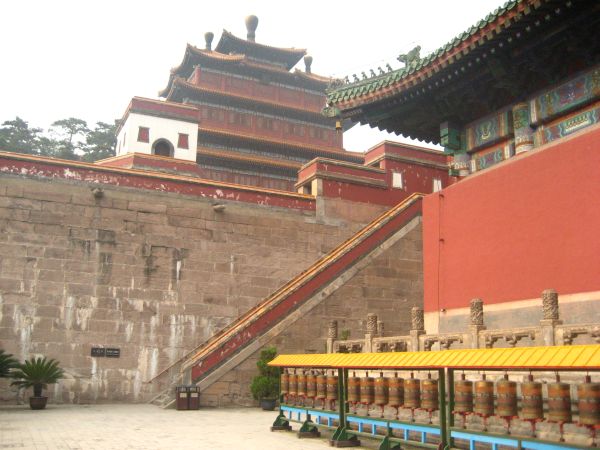
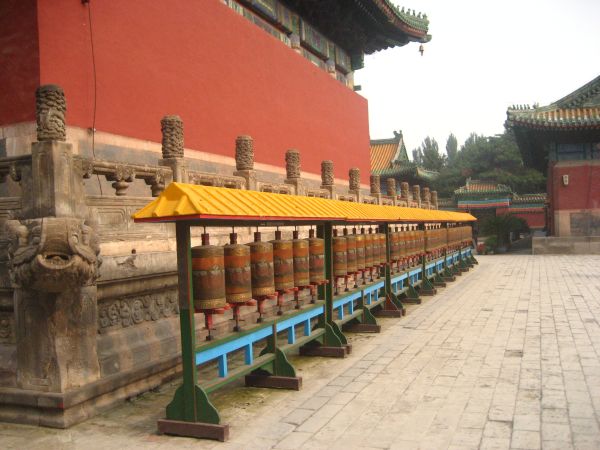
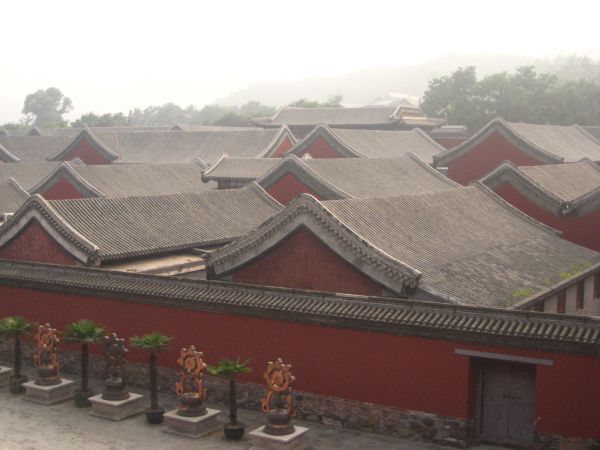
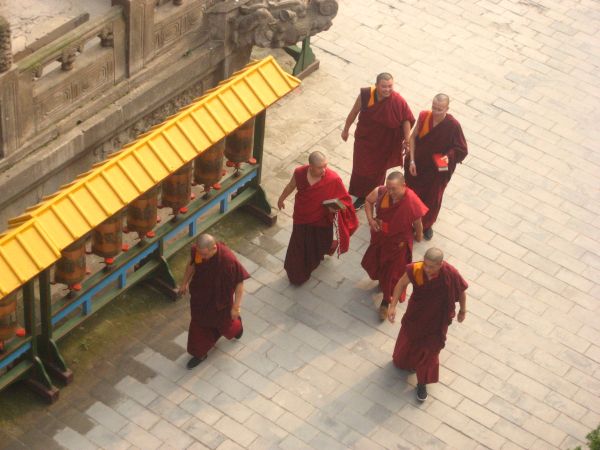
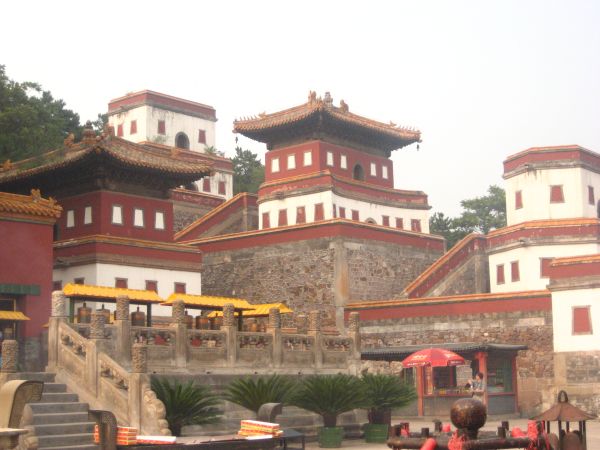
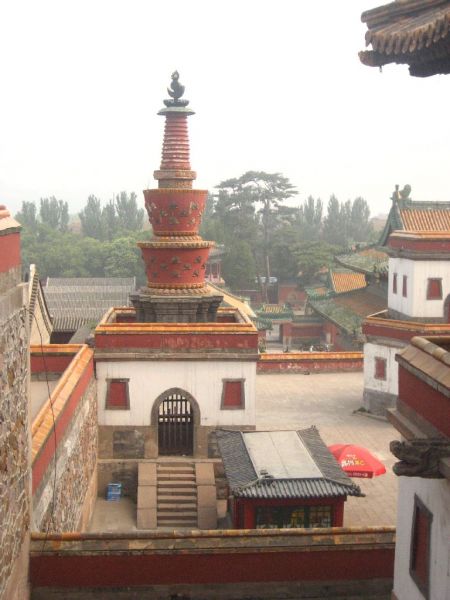
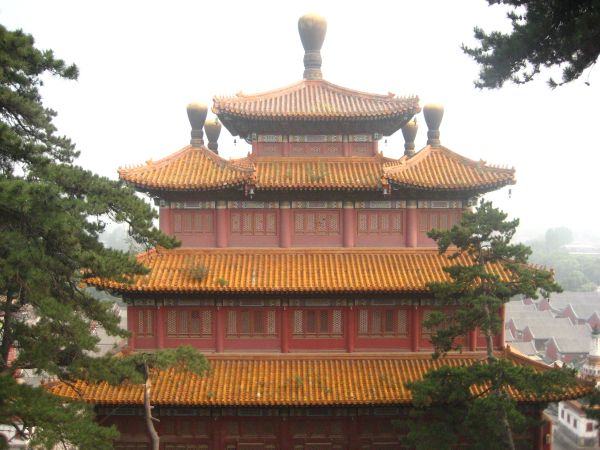
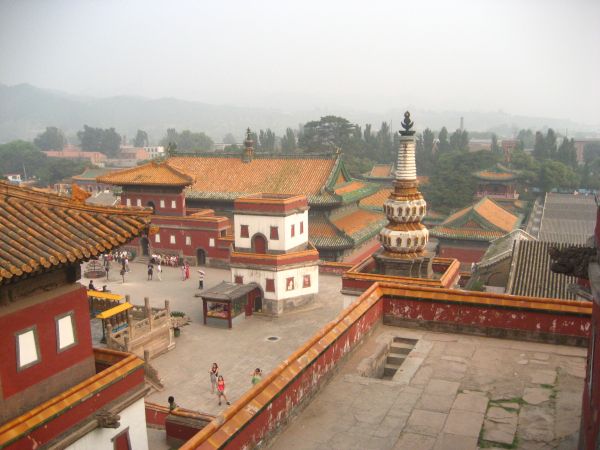

Then, we head for the Putuo Zongcheng temple, hoping to visit it despite the the late time. On the way, we get by the Xumi Fushou temple whose forms draw their roots in the Shigatse temple.
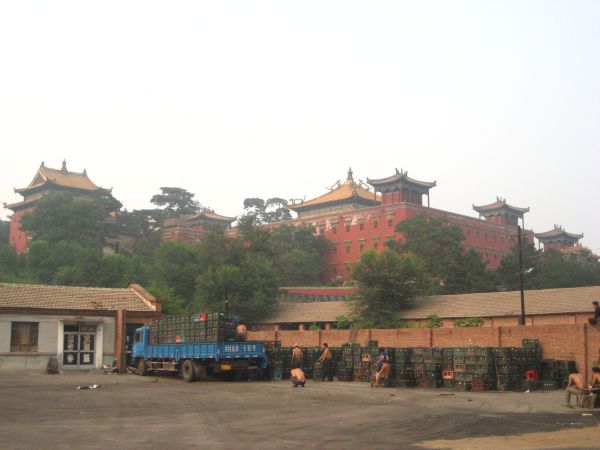
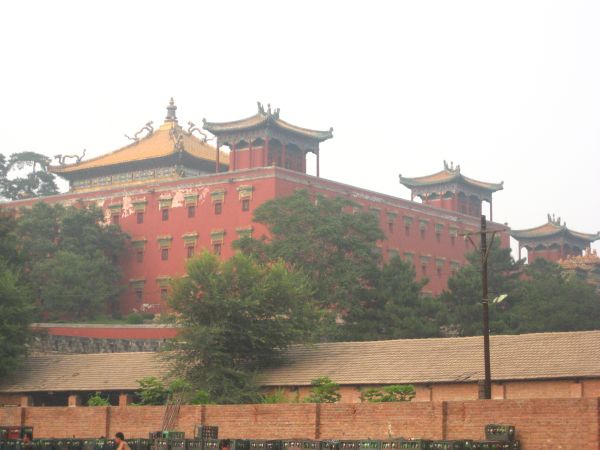
The next complex is inspired by the Dalai-lama's residence, the Potala located at Lhassa. We get in the largest temple in the city of Chengde ; a path goes round a sacred building, rises, and dies at the bottom of the palace. A staircases sequence leads up to the roof. Its thick walls shelter a courtyard. The architecture of this courtyard contrasts with the austerity and the geometric lines of the palace front.
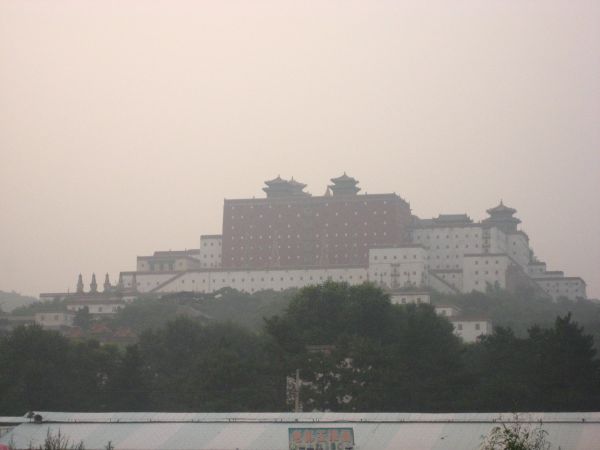

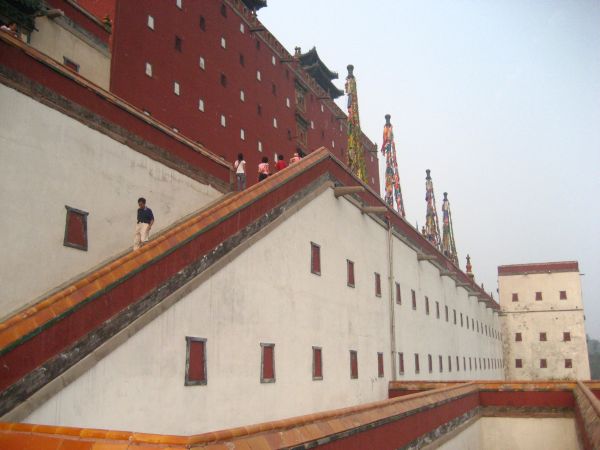
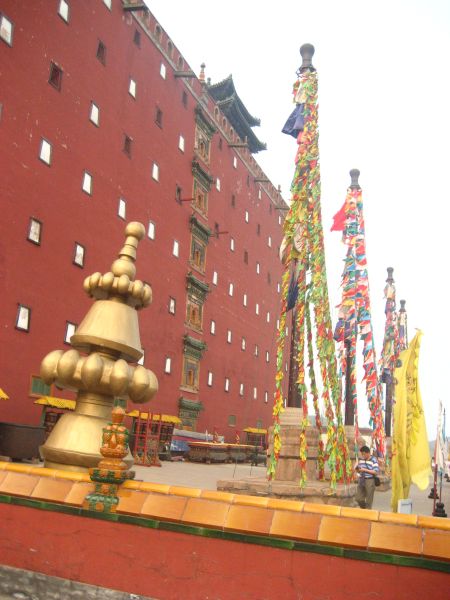
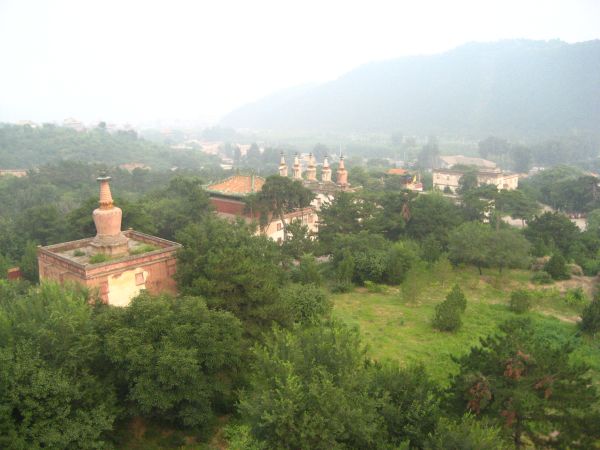
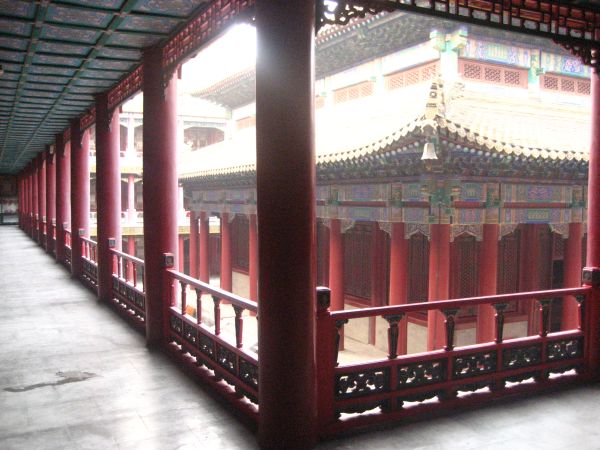
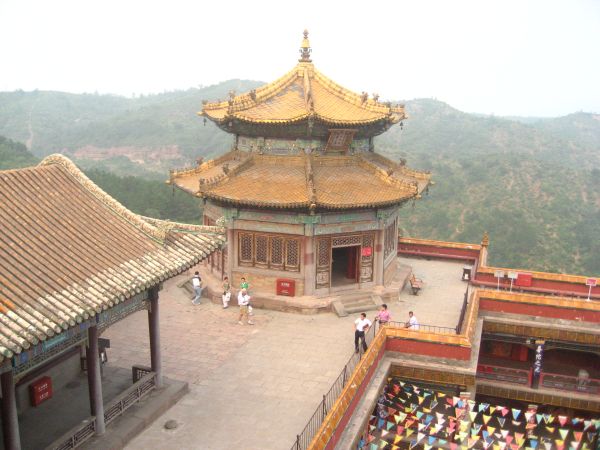
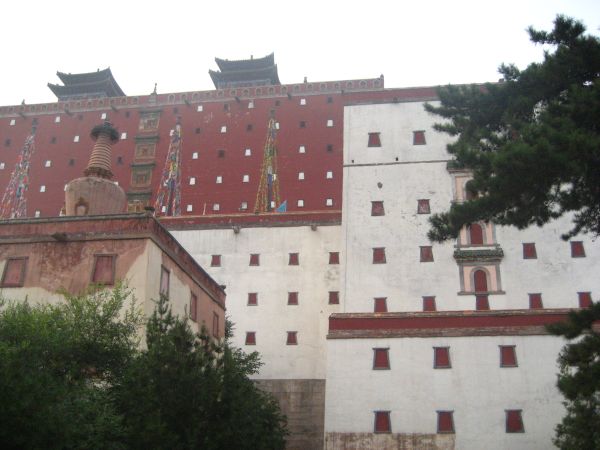
« previous entries - page 6 of 7 - next entries »





 visits
visits